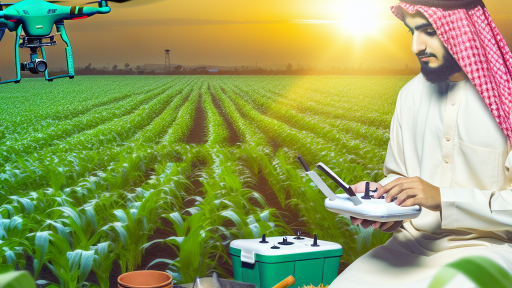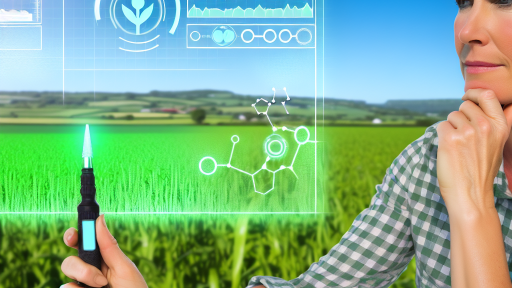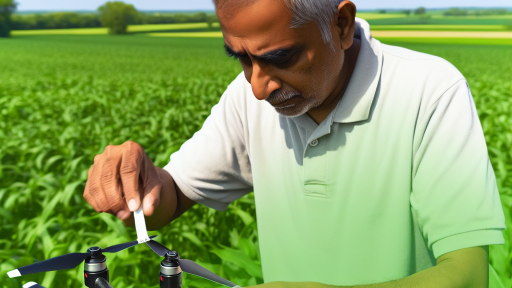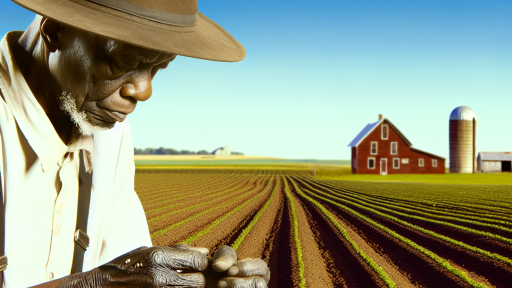Introduction to Drone Technology in Agriculture
Drone technology revolutionizes modern agriculture.
Farmers increasingly adopt drones to enhance productivity.
These devices offer innovative solutions for crop management.
Drones streamline tasks like monitoring and mapping fields.
Thus, they save farmers valuable time and resources.
Understanding the Benefits of Drones
Drones provide real-time data to farmers.
This data helps in making informed decisions.
They enable precision agriculture by ensuring efficient resource use.
Consequently, farmers can reduce waste and improve yields.
Geospatial Mapping and Monitoring
Drones capture high-resolution images of fields.
Farmers use these images for geospatial analysis.
They can identify issues like pest infestations and diseases.
Time-sensitive interventions become easier with this technology.
Cost-Effectiveness for Small Farms
Small farms benefit greatly from drone use.
These devices often lower operational costs over time.
Transform Your Agribusiness
Unlock your farm's potential with expert advice tailored to your needs. Get actionable steps that drive real results.
Get StartedMoreover, they reduce the need for manual labor.
Farmers can optimize inputs like seeds and fertilizers.
This leads to better financial returns and sustainability.
Real-World Applications
Various farmers utilize drones in diverse ways.
- Crop health assessment using spectral analysis.
- Soil condition monitoring to enhance fertility.
- Livestock tracking to ensure animal health.
Farmers find practical applications tailored to their needs.
These solutions make operations more efficient.
Benefits of Using Drones for Small Farms
Enhanced Crop Monitoring
Drones provide real-time monitoring of crop health.
They enable farmers to identify issues promptly.
Furthermore, drones can assess crop density efficiently.
Efficient Resource Management
Drones help optimize resource usage on farms.
They enable precise application of water and fertilizers.
This reduces waste and maximizes yield.
Cost Reduction
Utilizing drones leads to significant cost savings.
They reduce the need for manual labor and machinery.
Additionally, drones are cost-effective for smaller plots.
Time-Saving Benefits
Drones can cover large areas quickly.
This allows farmers to complete tasks in less time.
As a result, they can focus on other critical farming activities.
Data Collection and Analysis
Drones gather valuable data for informed decision-making.
This data includes soil health, moisture levels, and pest infestations.
Farmers can use this information to plan future strategies.
Improved Precision in Farming
Drones enhance precision agriculture techniques.
They allow for targeted treatments, reducing chemical use.
This precision protects the environment and increases sustainability.
Showcase Your Farming Business
Publish your professional farming services profile on our blog for a one-time fee of $200 and reach a dedicated audience of farmers and agribusiness owners.
Publish Your ProfileCost Analysis: Initial Investment vs. Long-Term Savings
Understanding Initial Investment
Investing in drone technology requires an upfront cost.
The price of drones can vary based on features and specifications.
Lower-end drones cost around a few hundred dollars.
More advanced models may cost several thousand dollars.
In addition to the drone, consider purchasing software and accessories.
Training is also an essential component of the initial investment.
Farmers must ensure they understand how to operate the drone properly.
Evaluating Long-Term Savings
Despite initial costs, drones offer substantial long-term savings.
They enhance efficiency and reduce manual labor requirements.
Drones can monitor large areas quickly and accurately.
This capability minimizes the need for multiple workers in the field.
Moreover, they help identify crop health issues early.
Earlier detection allows farmers to rectify problems promptly.
This action can lead to increased crop yields and profitability.
Comparing Costs Over Time
Over time, the savings from using drones can outweigh their costs.
Consider calculating potential savings for specific farming operations.
For instance, using drones for irrigation management can save both time and water.
Additionally, pest control through drone surveillance can limit pesticide use.
Farmers may also benefit from improved soil analysis using drone data.
This technology can lead to more informed decision-making.
Thus, evaluating both upfront and ongoing costs is crucial.
Financial Benefits of Utilizing Drones in Agriculture
Weighing initial investments against long-term benefits is essential.
Farmers who adopt drone technology often see better financial outcomes.
Ultimately, the right tools can enhance farm productivity dramatically.
Discover More: Improving Supply Chain Efficiency With Blockchain In Agriculture
Types of Drones Suitable for Small Farms
Agricultural Drones
Agricultural drones cater specifically to farming needs.
They can assist in crop monitoring and health assessment.
Farmers can use them for precise irrigation management.
Additionally, these drones enable effective pest control.
Surveying Drones
Surveying drones gather geographical data efficiently.
They help farmers analyze land use and crop distribution.
These drones also excel in mapping fields accurately.
Furthermore, they can track changes over time effectively.
Multispectral Drones
Multispectral drones capture imagery beyond the visible spectrum.
They help in assessing plant health more accurately.
These drones provide insights into soil conditions.
Moreover, they are invaluable for precision agriculture.
Fixed-Wing Drones
Fixed-wing drones cover large areas quickly and efficiently.
They are ideal for mapping extensive farmlands.
Farmers benefit from their longer flight times.
Showcase Your Farming Business
Publish your professional farming services profile on our blog for a one-time fee of $200 and reach a dedicated audience of farmers and agribusiness owners.
Publish Your ProfileAdditionally, they require less frequent recharging.
Quadcopters
Quadcopters are versatile and highly maneuverable drones.
They fit perfectly into various farming applications.
Farmers can use them for real-time data collection.
Also, they are suitable for detailed aerial inspections.
Choosing the Right Drone
Selecting the right drone depends on specific farming needs.
Farmers should assess the size of their farmland.
They must also consider the data they want to collect.
Additionally, budget constraints play a critical role.
Finally, ease of use should influence their choice.
Learn More: Blockchain Solutions For Efficient Data Management In Farming
Key Features to Look for in Cost-Effective Drones
Affordability and Value
Cost-effective drones balance price and functionality well.
Identify models that come with essential features at a competitive price.
Look for drones that provide warranties and customer support discounts.
Flight Time and Range
Flight time is critical for farm operations.
Choose drones offering at least 20 to 30 minutes of flight time.
Consider the effective range of the drone for larger fields.
Long-range options minimize the need for frequent battery changes.
Camera Quality
High-resolution cameras enhance agricultural analysis.
Look for drones with at least 1080p video capability.
Consider models that allow for easy camera upgrades in the future.
Ease of Use
User-friendly interfaces help maximize productivity.
Choose drones with intuitive controls and smartphone compatibility.
Consider options that offer automated flight plans for efficiency.
Durability and Maintenance
Durable drones withstand various weather conditions.
Evaluate the maintenance requirements before purchase.
Check if spare parts and repair services are readily available.
Data Management Software
Effective drones come with robust data management tools.
Look for software that facilitates easy data analysis and reporting.
Seamless integration with existing farm management systems is beneficial.
Customer Reviews and Support
Research customer reviews to gauge satisfaction and usability.
Select models with positive feedback on performance and reliability.
Good customer support ensures quick resolutions to any problems.
Delve into the Subject: The Future Of Farming: Embracing Agri-Fintech For Long-Term Success
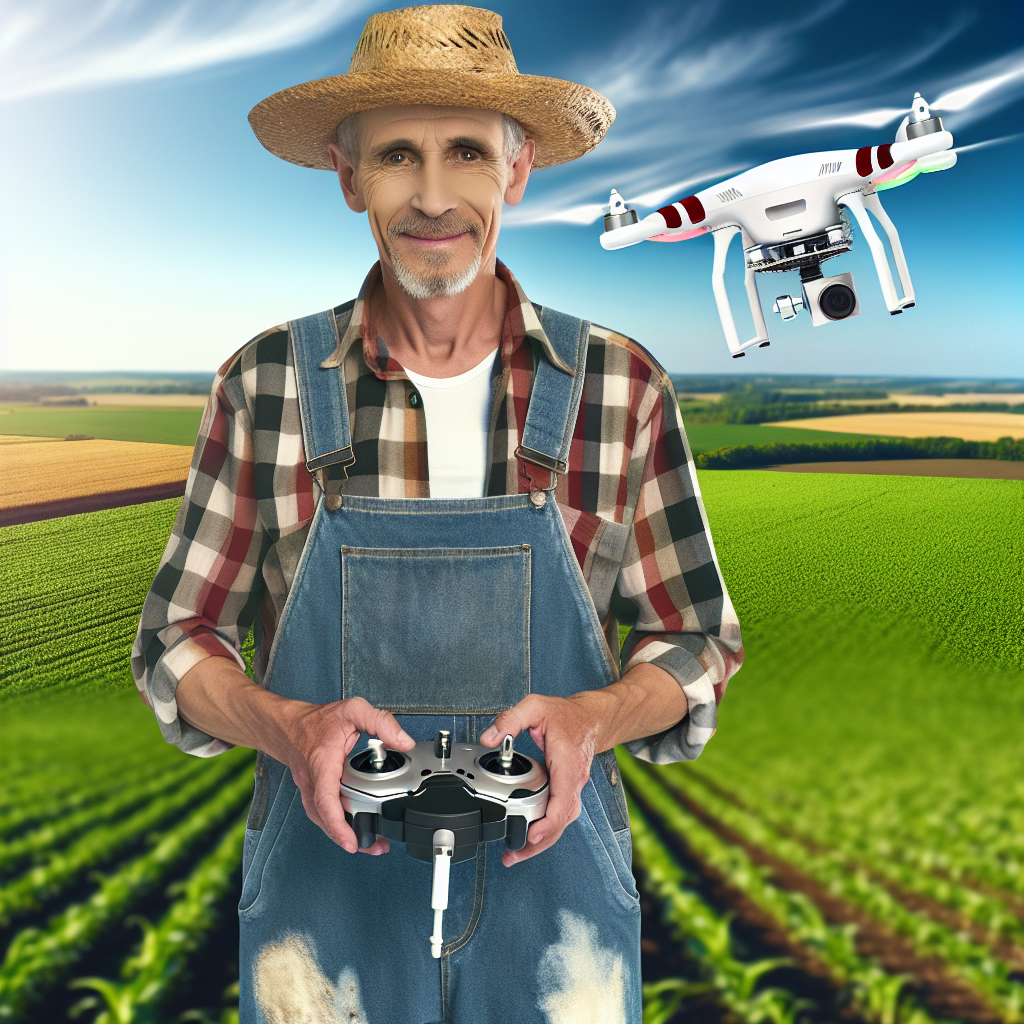
Case Studies: Successful Drone Implementation on Small Farms
Introducing Drone Technology
Small farms increasingly adopt drone technology for various applications.
They utilize drones for crop monitoring and data collection.
This technology helps farmers make informed decisions.
For instance, Olivia’s Organic Farm in Texas embraced drones in their daily operations.
Case Study: Olivia’s Organic Farm
Olivia’s Organic Farm implemented a drone to monitor crop health.
The drone captures high-resolution images of their fields.
Showcase Your Farming Business
Publish your professional farming services profile on our blog for a one-time fee of $200 and reach a dedicated audience of farmers and agribusiness owners.
Publish Your ProfileThese images provide vital information about plant health.
Consequently, Olivia identifies areas needing attention quickly.
This method reduces wasted resources and increases yield.
Enhancing Precision Agriculture
Parker Family Farms in Iowa exemplifies precision agriculture with drones.
They use drones for soil analysis and mapping.
This technology allows them to vary their planting strategies effectively.
Moreover, they can optimize fertilizer use based on specific field conditions.
This targeted approach improves efficiency and saves costs.
Case Study: Parker Family Farms
Parker Family Farms recorded a significant yield increase after implementing drones.
They decreased fertilizer costs by 20% using precise application methods.
The farmers now monitor crop growth in real-time with ease.
Overall, they have increased their profit margins considerably.
Monitoring Livestock Health
Drones also assist in livestock management on small farms.
For example, Moss Ranch in Oregon uses drones to monitor cattle.
The ranch conducts regular aerial surveys to assess herd health.
Additionally, they can quickly locate missing animals.
This approach saves time and improves overall management.
Case Study: Moss Ranch
Moss Ranch reduced its labor costs by 30% using drone technology.
The drones help keep track of vast grazing areas efficiently.
This allows ranchers to focus on other important tasks.
Ultimately, it contributes to improved livestock welfare and productivity.
Future of Drones in Agriculture
The potential of drones in small farming continues to grow.
Farmers are exploring new applications and use cases.
From data analytics to aerial seeding, the possibilities are endless.
Drones promise a more efficient and sustainable future in agriculture.
As technology advances, small farmers will continue to benefit.
Discover More: Using Blockchain For Enhanced Record Keeping In Agricultural Operations
Regulatory Considerations for Operating Drones in Agriculture
Understanding Federal Regulations
The Federal Aviation Administration (FAA) regulates all drone operations in the U.S.
Farmers must comply with Part 107 of the Federal Aviation Regulations.
This regulation outlines rules for commercial drone use.
First, operators must obtain a Remote Pilot Certificate.
Additionally, drones must weigh less than 55 pounds for commercial use.
Understanding these requirements is crucial for legal operations.
State and Local Regulations
State and local laws may also impact drone usage.
Farmers should research local regulations prior to operation.
Some states require specific permits for agricultural drone use.
Moreover, privacy laws may affect how data is collected.
Consult legal experts to ensure compliance with all relevant laws.
Operational Guidelines for Safety
Safety is a top priority when operating drones in agriculture.
Farmers must conduct pre-flight checks to ensure drone functionality.
Showcase Your Farming Business
Publish your professional farming services profile on our blog for a one-time fee of $200 and reach a dedicated audience of farmers and agribusiness owners.
Publish Your ProfileMaintaining visual line-of-sight during operations is mandatory.
Operators should also avoid flying near other aircraft or populated areas.
Additionally, they must notify nearby airports of their drone operations.
Insurance and Liability Considerations
Insurance policies can mitigate risks associated with drone use.
Farmers should consider liability insurance for potential accidents.
Moreover, thorough insurance coverage protects against equipment theft or damage.
Consulting with insurance agents familiar with drone operations is wise.
Adapting to Evolving Regulations
Drone regulations are constantly evolving as technology advances.
Farmers must stay informed about changes in the regulatory landscape.
Joining agricultural associations can provide valuable updates.
Engaging with fellow farmers fosters knowledge-sharing about compliance.
Staying proactive ensures smooth operation and adherence to laws.
Future Trends: Advancements in Drone Technology for Small-Scale Farming
Integration of Advanced Sensors
Advanced sensors significantly enhance drone capabilities.
These sensors collect precise data about soil health.
Moreover, they monitor crop conditions in real-time.
This technology allows farmers to make informed decisions quickly.
Increased Automation in Farming Tasks
Automation is transforming how small farms operate.
Drones can perform tasks like seeding and fertilization efficiently.
This reduces labor costs while increasing productivity.
Consequently, farmers can focus on more strategic tasks.
Improved Data Analytics
Data analytics tools are becoming more accessible for farmers.
Drones collect extensive data sets for analysis.
Farmers can identify trends and patterns in their fields.
This insight leads to better crop management.
Fostering Sustainable Practices
Drones promote sustainable farming methods effectively.
They optimize resource usage, like water and fertilizers.
This results in reduced waste and environmental impact.
Furthermore, sustainable practices resonate with consumers today.
Affordability Through Technological Advancements
Technological advancements are making drones more affordable.
Smaller farms can invest without facing financial strain.
This accessibility promotes wider adoption among small-scale farmers.
In turn, this drives competition and innovation in the market.
Additional Resources
Precision Agriculture: Benefits and Challenges for Technology …

